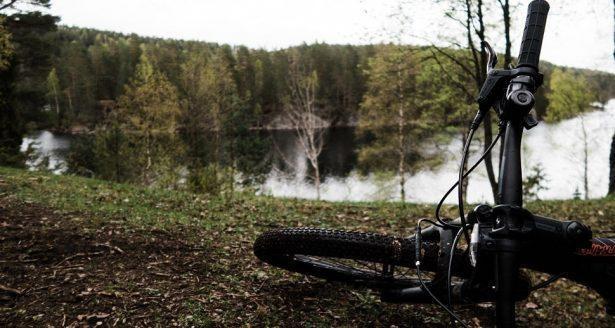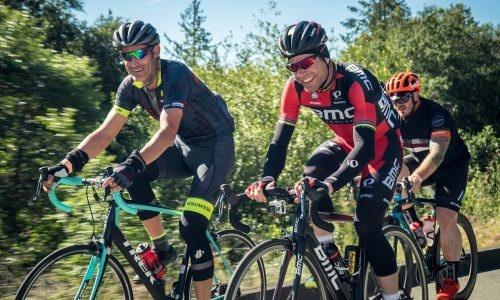No one likes to be stopped riding, and it is even worse if it is a small injury that we could have easily avoided.
With a few hints and tips, we can learn to minimize the time off our bikes. We will though have to accept that fact that we can’t avoid all injuries, and that some of us are more prone to getting injured than others.
Now, please remember that this article will not be a definitive medical guide. You should always listen to your own body, as after all, you know it better than anyone else.
If you feel your symptoms are severe, don’t just rely on our guide or Google, go and see a doctor.

Crashing/impact injuries
We’ll all crash at some point, especially if we occasionally ride at our limits or over them. It is hard then to avoid crashes unless you decide to just live on Zwift.
If you have a big crash, your best bet is to go and see a doctor or other health professional.
Especially if you suspect a concussion or people around you suspect a concussion. One of the best ways to lessen the risk/severity of a concussion is a helmet, and we particularly recommend helmets featuring MIPS technology.
Giro Isode MIPS helmet

We’re recommending the Giro Isode MIPS helmet as it is one of the best value MIPS helmets. It contains everything you need and doesn’t have any gimmicks.
The simple reason we like MIPS is that it works and it can be the difference between carrying on with your ride or going to the hospital.
MIPS works similarly to the synovial fluid inside your head. Simply the inside of your helmet will move to help try and deflect the blow/trauma to your head if you fall.
It will not save you from every crash, but it is better to have a helmet and never need it than not to have it and need one.
Other crash injuries include road rash. Road rash will hurt, and what you’ll have to do to help it heal is just as bad. When you get home, you’ll need to clean the wound out, to remove dirt and stop yourself from getting sepsis.
To clean road rash, you will need to scrub it, and that will not be fun, but the scrubbing is more fun than if you don’t scrub it. Then you’ll want to cover the area in antiseptic cream.
Broken bones, especially your collar bone, is also a highly likely outcome for a crash. If you’ve broken a bone, you need to go to the hospital.
There is though an injury from crashes that might not be as noticeable as all the above. That injury is a muscle sprain.
If you don’t notice your muscle sprain, it can lead to other injuries as your body tries to compensate for the damaged muscle.
If you suspect a muscle sprain, the best cure is time off the bike and an icing regime. You may also want to go and see a physio to help get you back up to peak health.
Back pain
One of the most common overuse injuries for cyclists is for lower back pain. Cyclists will spend hours hunched over when riding, and then add in office jobs, and it is not hard to see why many of us will have had a sore back.
The problem is a sore back can then lead to other injuries, as your body tries to change its posture to get away from the pain.
If you suffer from lower back pain, the best thing you can do is to take some time off the bike. When you’re taking this time off your bike, you’ll want to start stretching your back and also think about stretching your hips.
The reason for stretching your hips is that the muscles connecting your lower back to your hips can easily get inflamed and add to the pain and discomfort you might be feeling. It could also be a great time to buy a foam roller if you haven’t already.
You may also want to go and see an osteopath and perhaps look at a bike fit to help with back pain. It can also be worth checking your position yourself.
One of the most common ones is that in going for the pro look your bike now has too aggressive a drop. Tray and bring your stem up a spacer.
The next thing would be to work on your core strength, the stronger your core, the less likely your lower back is going to collapse under the strain of riding.
A strong core should also bring you a few more watts when your riding as well, a sort of win/win.
Knee pain
Knee pain generally comes from getting your bike position wrong. The first thing you need to do with severe knee pain is to take time off the bike, get that foam roller out, and try an elevation and ice regime.
You can also try some sports massage in order to get your knees sorted.
Once, you’ve done this have a look at your bike position. Pain at the front of your knee is generally symptomatic of a saddle that is too low. Pain at the back of your knee generally means that your saddle is too high.
Pian at the side of your knees is generally due to incorrect cleat positioning; it stops your knee correctly tracking when you pedal.
You may also find that your IT band is pulling tight over the top of your patella. The easiest way to solve this issue is massage and using a foam roller.
Get in the habit of either massage or foam rolling, and you should find that IT band tightness is no longer an issue.
Wrist, hand, arm, and neck pain
When you ride your bike, you ideally want 60% of your weight to go through your rear end and 40% to be supported at the front of the bike. Putting too much weight through the front of your bike will give your wrists and arms a hard day.
Putting too much weight through your arms is usually caused by having too much of a reach on the bike. You’ll want to make sure that your item isn’t too long and also that it isn’t too low for you.
Your bars sitting too low is also likely to cause neck pain, as you hyperextend your neck to see what is coming up down the road.
Photo by bennett tobias on Unsplash
I’ve spent way more time in the bike trade than anyone should reasonably want to. In that time I’ve wanted to make cycling jargon and marketing easier to cut through to help people get the bike of their dreams.
When I’m not writing about bikes, I can be seen out bikepacking on single speed bikes or teaching kids how to ride.


